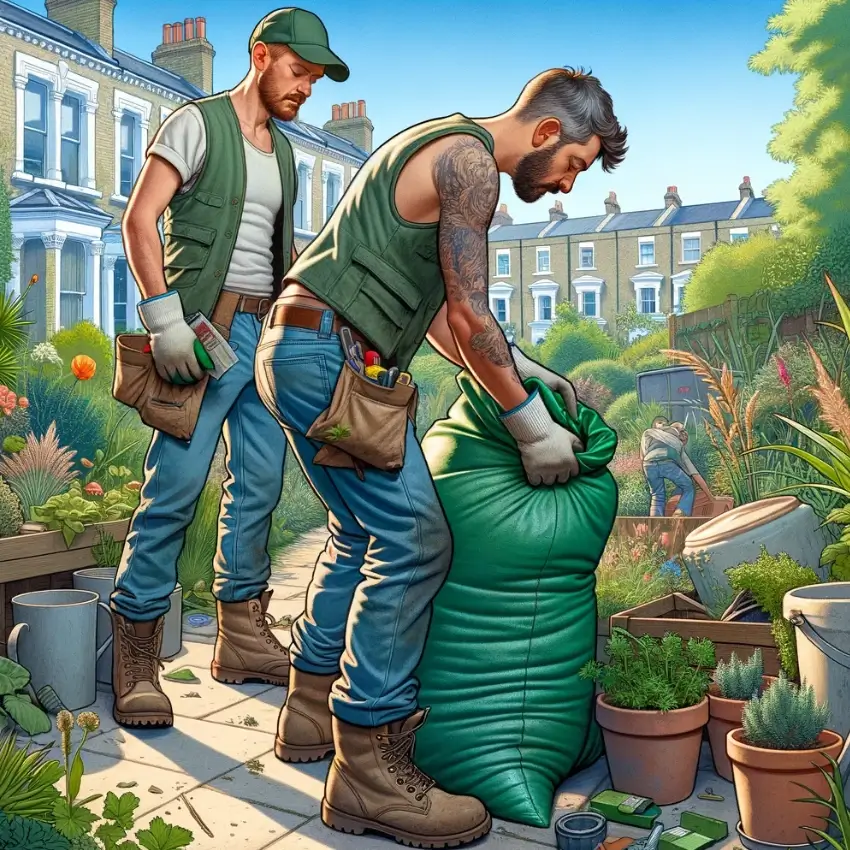Garden Clearance
Hiring a garden clearance service saves time and effort. Comparing prices helps you find cost-effective options to fit your budget and needs.
Local Garden Clearance Firm Benefits
Choosing a local garden clearance firm can bring numerous benefits. Firstly, the convenience they offer due to their proximity can provide quicker services and simpler scheduling. Secondly, their intimate understanding of your area’s specific gardening and waste disposal requirements, including local regulations and recycling facilities, can be a great asset. Thirdly, you often encounter lower costs with local services, given they spend less time and fuel travelling to your location. Finally, by hiring local, you contribute to the local economy, supporting small businesses, and fostering community growth.

Garden Clearance Costs
Garden clearance costs can vary significantly depending on the size of the garden, the volume and type of waste to be removed, and the specific services required. It’s also important to note that pricing can vary by location and even the season.
However, as a general guideline, the cost for garden clearance services can range anywhere from £100 to £500 or more. Some companies charge by the bag or by the volume of waste, and you might expect to pay in the region of £75-£150 per cubic yard. Others may offer a flat rate for the entire job. Some more complex or labour-intensive tasks, like tree or shed removal, may cost extra.
Discover the cost of clearing your garden by using professional garden cleaners.
Typical Tools for Garden Clearance
There are a variety of tools and equipment that can be used in garden clearance, depending on the specifics of the job. Some of the common tools include:
Hand Tools: Pruners, shears, loppers, hand saws, and hedge trimmers are commonly used for cutting back overgrown plants, trimming hedges, and removing smaller trees or shrubs.
Power Tools: Chainsaws, strimmers, leaf blowers, and wood chippers can be used for larger or more difficult tasks, such as cutting down large trees or dealing with a significant amount of green waste.
Shovels and Spades: These are used for digging up roots, removing plants, or shifting soil.
Wheelbarrow: This is an essential tool for moving green waste, soil, and other materials around the garden.
Rakes and Brooms: These are used for gathering up loose debris, leaves, and other garden waste.
Gloves and Safety Equipment: Garden clearance can be a dirty and potentially dangerous job, so good quality gloves and other safety equipment such as safety glasses, ear protection, and sturdy footwear are essential.
Rubbish Bags and Bins: These are used to gather and transport waste to a disposal site.
Ladders or Platforms: These might be required for high hedge trimming or tree pruning jobs.
Van or Truck: A larger vehicle may be needed to transport the garden waste to a recycling or disposal facility.
The specific tools required will depend on the nature of the garden clearance job. Clear My Rubbish has all the necessary equipment to handle a wide range of tasks.

Garden Clearance FAQs
What time of the year is best for garden clearance in the UK?
The best time for garden clearance in the UK largely depends on the specific tasks you need to complete. However, there are generally two primary periods in the year that are ideal for a major garden clearance:
- Autumn (Late October to November): This is a good time to clear out summer growth, trim back perennials, rake up fallen leaves, and prepare your garden for the winter months. It’s also the perfect time to clear away any summer annuals that have died off and compost any organic waste. Clearing your garden in autumn helps to prevent diseases from spreading and can make your spring gardening tasks easier.
- Early Spring (February to March): Early spring is another good time for garden clearance as it prepares your garden for new growth. You can clear away any debris that has accumulated over winter, cut back the last of the winter stems, prune shrubs and hedges, and prepare your soil for spring planting.
That being said, garden maintenance is a year-round activity and smaller clearance tasks like trimming hedges, mowing the lawn, and removing weeds should be done regularly throughout the year to keep your garden in good shape. Also, remember that some tasks should be done at specific times – for example, most trees and shrubs are best pruned in late winter or early spring, but some species may have different requirements. Always check the best practices for each plant in your garden to ensure proper care.
